Crown Devon

I saw
this stall at the Alexandra Palace Antiques Fair in North London. It was full
of the most gorgeous antique china.
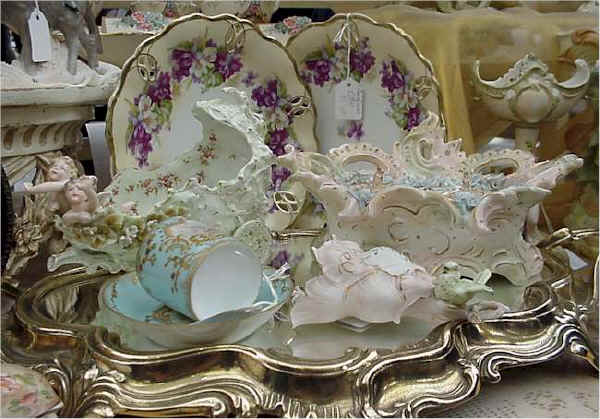
The
two ladies who run the stall don't have a shop. They usually sell at
antiques fairs in the Essex and London regions.
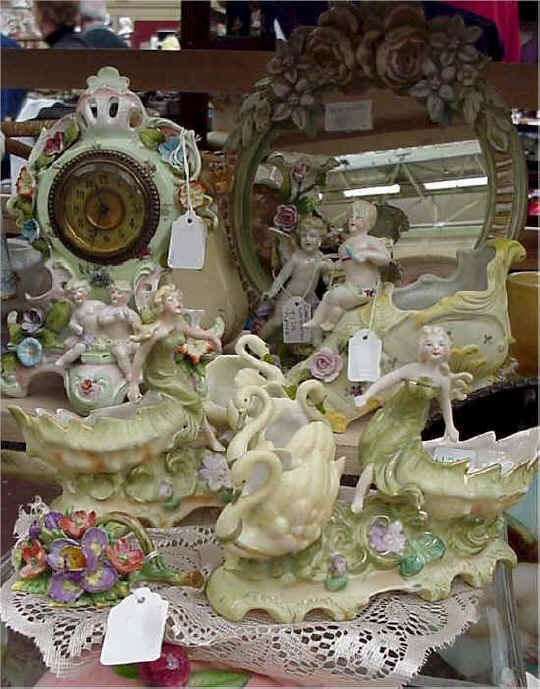
The
stallholders specialise in decorative china from the 19th and 20th
centuries. They seem to love cherubs and fairies, which appear on all
sorts of objects on the stall.
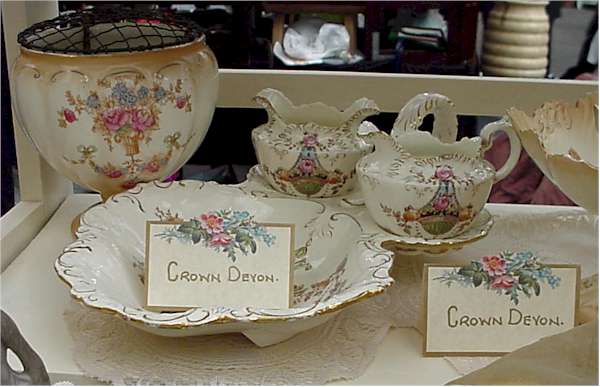
This
attractive set is actually designed as an elegant way of serving strawberries and cream. The
strawberries sit in the main bowl. You then fill the little jug with single
cream (a thin cream suitable for pouring over food) and the small bowl with sugar
to sprinkle over the strawberries. Delicious.
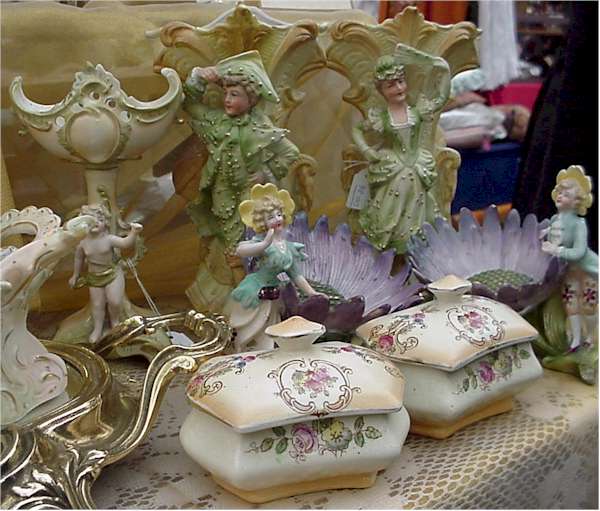
I love
the two little ornamental figures who are holding onto the large flowers.
I think they are supposed to be flower fairies.
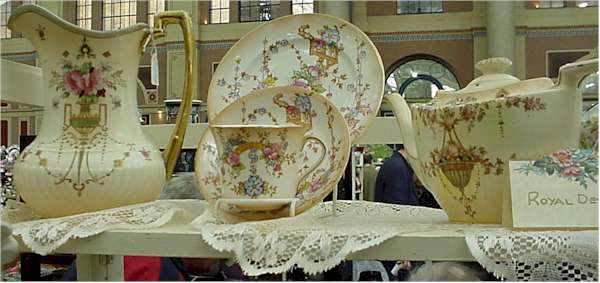
Many
of the pieces of china on the stall are by a British company called Crown
Devon. This range of china with the cream background and floral designs
was first introduced in the 1890's and is called 'Vellum'. It was their
most popular product for about 20 years.
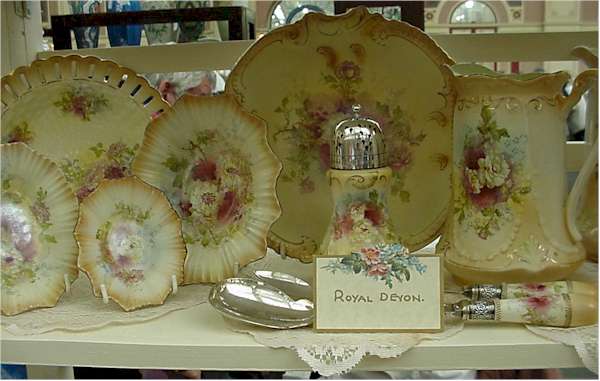
Within
the Vellum range of china there was a huge variety of different designs,
all of which are now highly collectable. Some of the designs were called
'Royal' such as 'Royal Devon' here. There was also 'Royal Windsor'.
'Royal Chelsea', 'Royal Sussex' etc. Other designs in the series were
named after places or rivers.
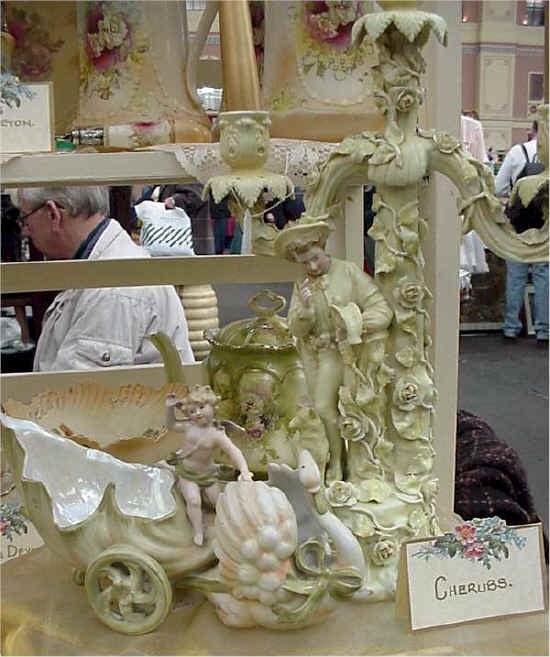
This
carriage that is being drawn by a swan and driven by a cherub would have
been used as a container for flowers or just as an ornament.
Often
objects like these and the candelabra behind it came in matching pairs.
The second swan vase would point in the other direction so that they
could be displayed facing each other on a shelf. Pairs in good condition
are harder to find and so are much more expensive to buy than single
items.
Crown
Devon pottery was made by a company that was originally called Fieldings. Early pieces are
marked S. F and Co. (after the founder Simon Fielding) but gradually the
company started to use the Crown Devon name by which the company is now
better known.
Although
it takes it's name from the county of Devon the factory was actually
located in Stoke-on-Trent in Staffordshire, an area of the country famous
for potteries.
The
company was founded in the late 19th century by Simon Fielding. In 1878
his son Abraham took over and made a lot of improvements to the site. At
that time they specialised in making a fashionable type of pottery
called majolica ware.
In the
early 1890's they introduced their Vellum range of pottery which soon
became very successful. Over the following years many new designs were
introduced in this style. Many were 'Royal' such as Royal Devon, Royal
Eton, Royal Tudor, Royal Suffolk and so on. These were best sellers for
the company for over 20 years. Other
designs in the series were named after rivers or towns.
By the
1920's tastes had changed and new Art Deco styles were introduced. The
company did particularly well with a wonderful range of lustre jugs and
vases in glowing colours, decorated with fantastic art deco designs.
These are highly collectable pieces today.
They
also produced many novelty items such as animals and musical jugs as
well as commemorative ware. During this time they were also very
successful with a range of decorative figures of ladies in the art deco
style. Pieces by artists such as Kathleen Parsons and Olga Hartzeg were particularly
striking.
The
pottery continued well into the 20th century making decorative china,
finally closing in 1982.
| antique
fairs
|
A
'fair' is the word used to describe an event that is held for a single
or several days, in this case where people gather to buy and sell antiques.
There
are many other sorts of fairs including Summer Fairs, Christmas Fairs and Fun Fairs.
|
|
| collectable
|
This
generally refers to objects which many people like to collect. If you
say that an object is 'very collectable' you mean that it is a good or
rare example of this type of object and so will be very desirable to a
collector.
|
|
| good condition
|
A term
commonly used to describe items which have little or no damage.
However if the object is described as being 'in generally good
condition' then this implies there may be one or two faults.
|
|
| 